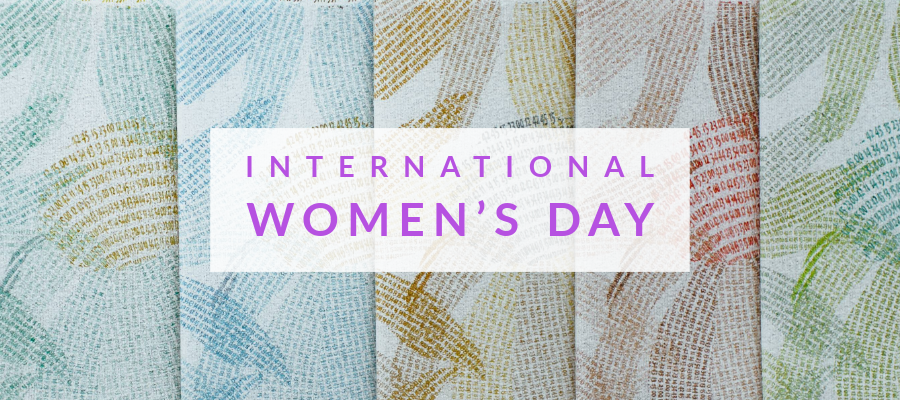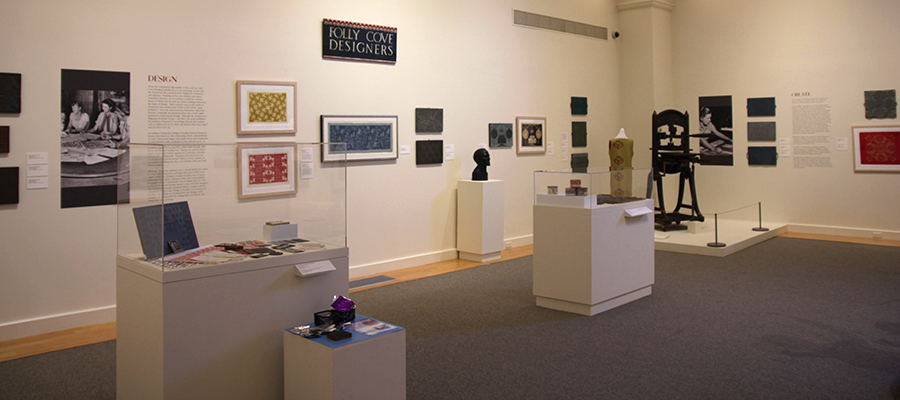
Folly Cove Designers Exhibit in Cape Ann
Despite having lived in New England for most of my adult life, it took listening to a podcast from an English journalist to learn about a unique group of designers living on the North Shore of Massachusetts. If you’re a textile maker, enthusiast, or someone who loves a well-researched story, you may already be familiar with Haptic and Hue, a podcast by Jo Andrews. (If not, I highly recommend checking it out.) In one episode, she introduced us to the Folly Cove Designers and the community that bound these (mostly) women together. After listening to this episode, I had to see their work in person and was thrilled there was an exhibit on display at the Cape Ann Museum in Gloucester, Massachusetts.
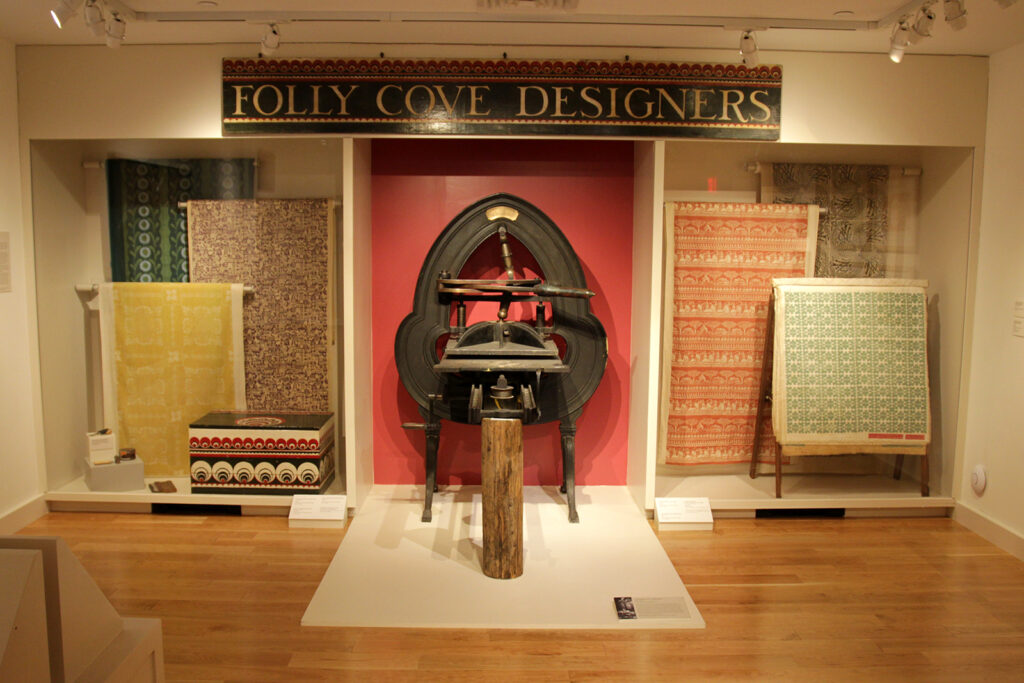
Who were the Folly Cove Designers?
The Folly Cove Designers grew out of an art course taught by Virginia Lee Demetrios, better known as Virginia Lee Burton, author and illustrator of such children’s classic books as Katy and the Big Snow, Mike Mulligan and his Steam Shovel, and The Little House. In 1938, Virginia started giving drawing lessons to her neighbor to make a little extra money to buy paper. Soon, more members of this close-knit community wanted to join the classes, and Virginia created an official course of study to teach drawing and design.
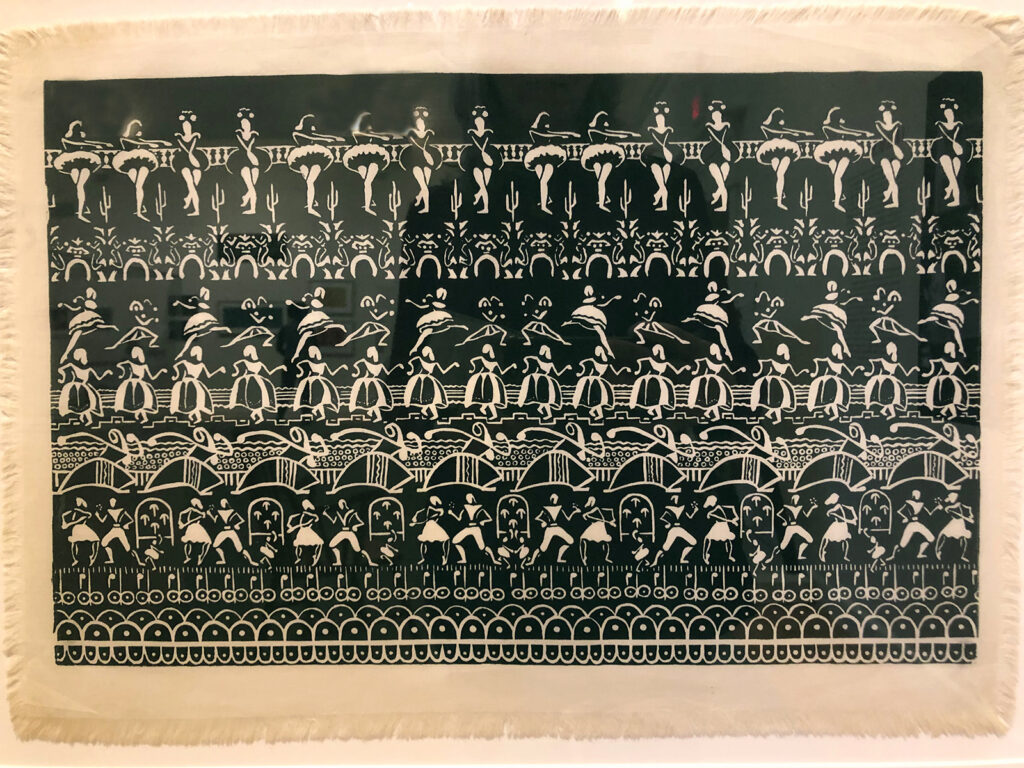
In her design course, Virginia stressed three overarching rules of design:
- Do it. (Don’t talk about it.)
- Don’t copy.
- Don’t give up.
Virginia believed strongly that design was a skill anyone could learn, but they had to take it seriously. “There are no shortcuts in learning design. It is a slow and hard climb, and you never reach the top. The more you learn, the more you find there is to learn.”
This group of ordinary citizens came together regularly to complete this course of study. In between meetings, they had rigorous homework assignments. Then, they would critique each other’s work, constantly improving.
Her guiding principles in teaching were:
- To recognize the creative talent in everyone.
- To realize that everyone can succeed if they don’t give up.
- To delight in the beauty of the natural world around us and the rhythms of our daily lives.
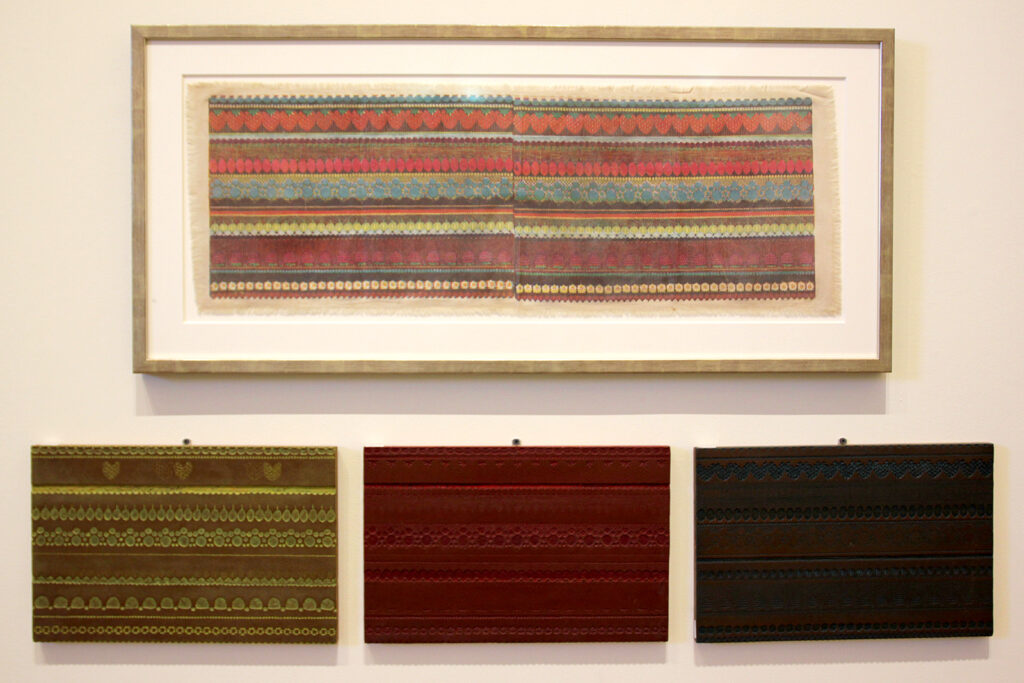
These beautiful designs were eventually carved on linoleum blocks and hand-printed onto fabric or paper. The group began exhibiting their work locally, eventually selling their printed fabric to the community and stores nationwide. The group of designers learned and worked together until they disbanded in 1969. Virginia died in 1968. Rather than continue, the designers decided to cease operation. They fulfilled outstanding orders, closed their doors, and agreed never to sell any designs produced under the Folly Cove Designers’ name. Instead, they donated their entire archive to the Cape Ann Museum.
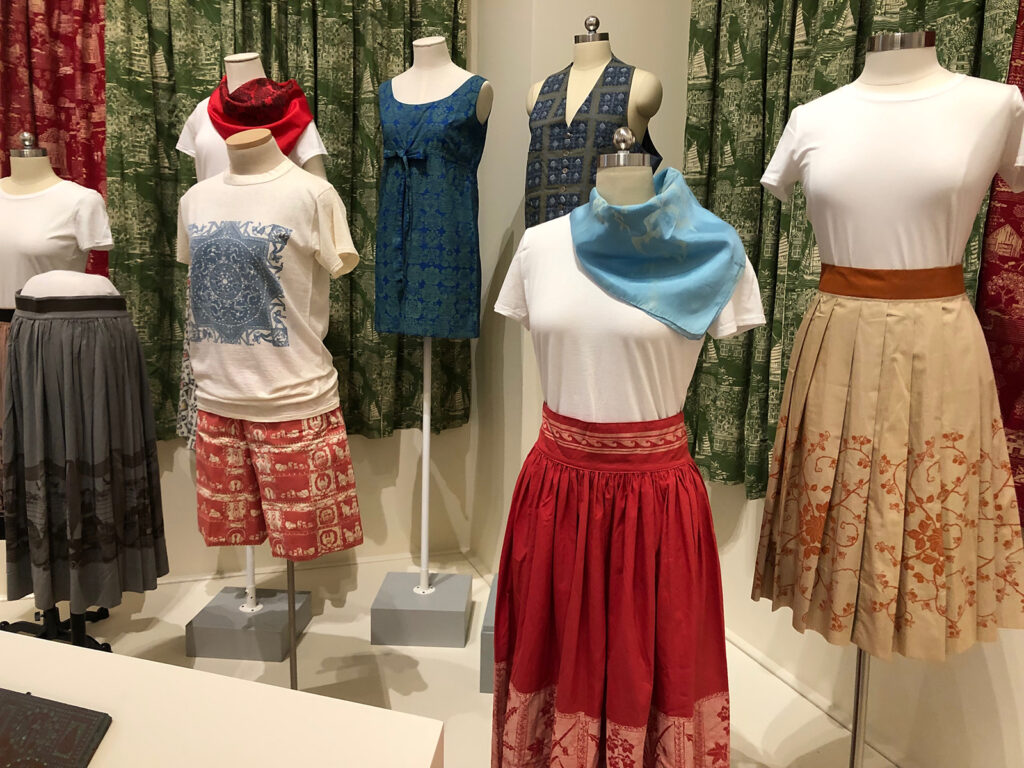
Their story is as much about Cape Ann as the designers.
After leaving the exhibit, we drove the scenic road around the island’s perimeter, stopping periodically to get out and admire a lighthouse or stare at the Atlantic Ocean. To walk along this coastline is to connect to the Folly Cove Designers. Their teacher told them to draw what they knew, be inspired by the world around them, and translate their unique experiences into patterns. Walk along the beach, and you’ll see the sea plants they drew and the animals, such as horseshoe crabs and lobsters. You’ll hear the crunch of shells underfoot and smell the salty air.
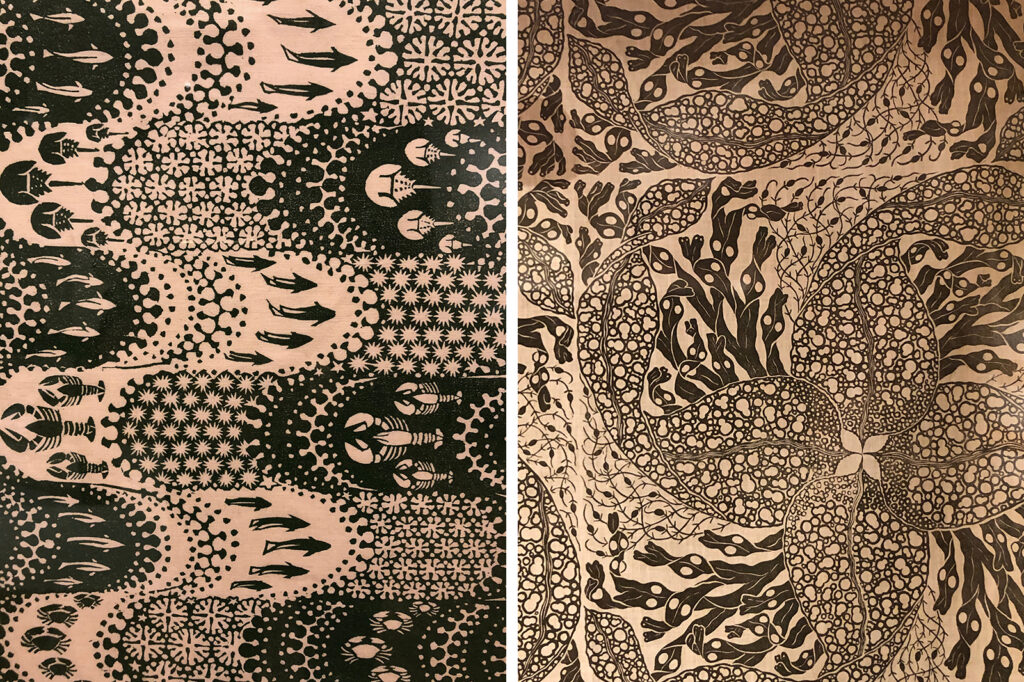
Right: Surfside by Ruth Hendy, 1964
More than just the landscape, they captured the people and scenes of everyday life. Cape Ann was a region with fishermen and farmers until around 1800. Around that time, the industry of the area changed to quarrying. With that came waves of immigrants to work the quarries, particularly from Ireland and then Finland. If you head to Halibut State Park, you can walk around an old quarry filled with water and look out at the ocean’s crashing waves. In their designs, these designers truly captured the expression of these people and the place they called home.

I was struck by something viewing this show.
In our world of TikTok tutorials and YouTube videos, we make everything look quick and easy. Just do these one or two things, and you’ll have this professional-looking outcome. Yet, we all know that it never is so quick and easy. Expertise takes time and practice.
Virginia believed everyone had creativity in them and could be excellent, but you had to work at it. It wasn’t some gift bestowed from on high. Anyone could make good work if they put the time into it. She created a community where everyone was inspired by each other, and they all pushed each other to be their best. This was more than a design course. It was an experience that tied a community together and produced a high-quality body of work as beautiful today as it was when it was made.
If you want to learn more about the Folly Cove Designers, I highly recommend listening to episode #33 of Haptic and Hue. The Cape Ann Museum also has a video vault with recordings of lectures and a book for sale in their gift shop. If you’re within driving distance of Gloucester, Massachusetts, the exhibit Designed & Hand-Blocked by the Folly Cove Designers is on view through March 25, 2023. This exhibit is the perfect antidote for a creative block!
Photo credit: Kristin Crane or David Hansen
Share this post
Author
DESIGN/COLOR TRENDS AND AWESOME INFORMATION IN YOUR INBOX
Sign up for our monthly trend letter





